EBOOK
Personalizing the Customer Journey
Published: Dec 3, 2018
E-commerce personalization has been a hot topic in marketing for the last few years now – heralded as a holy-grail that can reduce acquisition costs, lift revenues and increase efficiency, all while keeping the customer happy.
But unfortunately, it’s not that simple. Yieldify’s recent State of CJO report revealed that marketers still consider personalization among the top 3 the most difficult tools or strategies to implement, behind only artificial intelligence (AI). This is further emphasized by the fact that less than one-third (27%) are currently using a website personalization tool to optimize the customer journey.
Despite this, e-commerce personalization is still very much on the agenda for marketers, with 37% planning to implement it in 2019. This means, that in addition to those who have already kicked off with personalization, 2019 will see almost two-thirds of brands seeking to provide customers with personalized customer journeys.
It seems like the year of personalization might finally be here, so in this guide, we’ll explore how marketers can overcome the challenges associated with e-commerce personalization, and take a look at personalization in-action across industries such as retail, travel and financial services.
Defining E-Commerce Personalization
Before we jump right in, first it’s key to define what we mean by e-commerce personalization.
In the past that, it’s been assumed that e-commerce personalization is little more than a few smart touches that make a website visitor feel more personally involved with the brand, such as an email that greets them by name, or an offer tailored to their birthday.
But today, website personalization goes far beyond these small touches – though they, too, can be vital additions to an experience that ultimately leads the customer to convert.
We take personalization for granted across many services that we use every day as consumers – a Netflix show ‘recommended for you’, or a Spotify discover weekly playlist are both examples of personalization in action.
The key in both these examples is the value delivered to the end user – a new show to enjoy or a favourite song. The problem e-commerce personalization has faced is that it hasn’t always been focused on this value exchange.
Product recommendations, for example, are only as good as they are relevant. If I was buying a gift the last time I shopped with you then how much do you really know about my taste and preferences?
Personalization for personalization’s sake is not the goal for e-commerce brands today – so what is?
Personalization is about delivering relevant messaging, at the right moment in the customer journey, to drive the desired action.
Personalization, like more traditional conversion rate optimization (CRO) tactics that came before, is an important tool within the wider practice of Customer Journey Optimization, but it’s not a stand-alone tactic or a goal in and of itself. The goals for marketers remain the same – acquire more customers, drive more conversions, build customer loyalty.
This guide will look at examples of how e-commerce brands are already achieving these goals by delivering more personalized customer journeys.
E-commerce Personalization – Why Now?
Consumers have made themselves clear – they want more personalized experiences from brands, and not just on e-commerce sites. Yieldify’s recent survey of over 1000 UK and US consumers revealed that 63% expect brands to have up to date information on their preferences across all channels. This number rises significantly within younger generations, too – 74% of millennials agreed, with that rising to 82% of millennials in the US.
The percentage of consumers that expect brands to have up-to-date information on their preferences across channels:

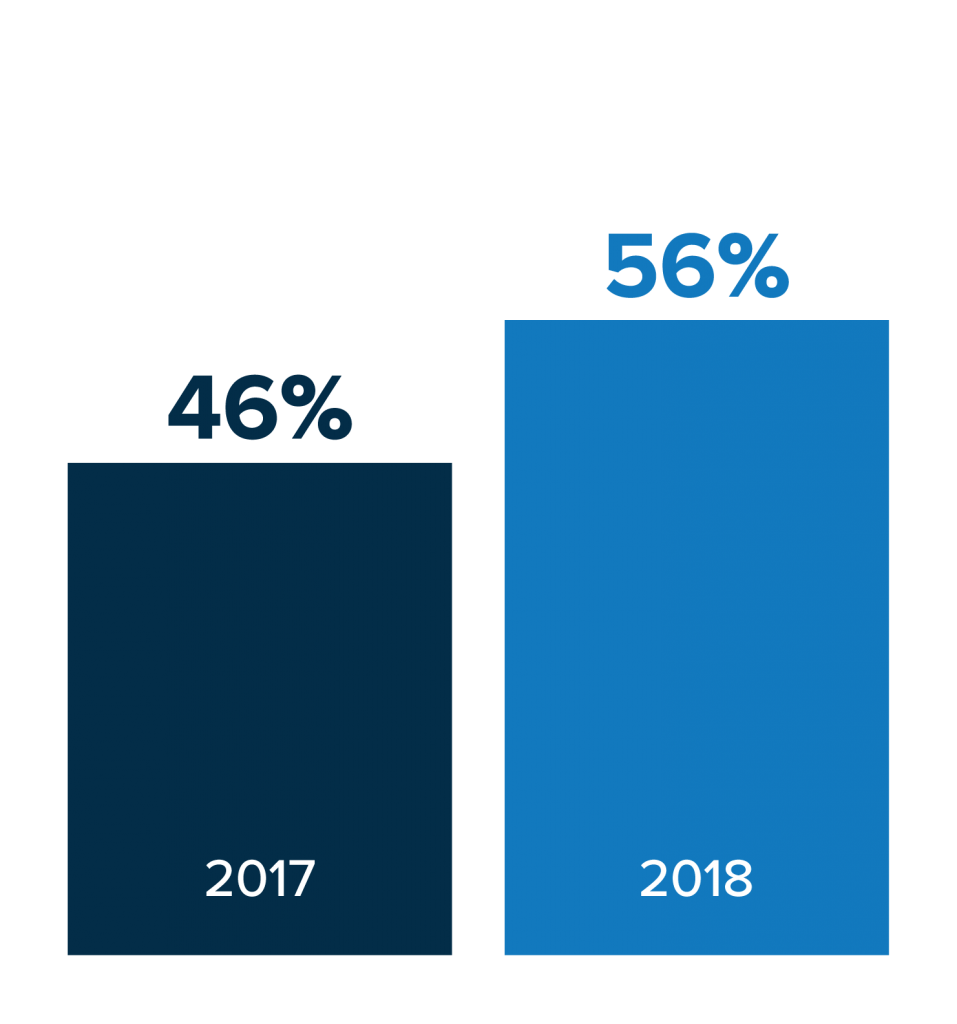
And, as we’ve already briefly covered, marketers want personalization too. With benefits such as reducing acquisition costs by as much as 50 percent, lifting revenues by 5 to 15 percent, and increasing the efficiency of marketing spend by 10 to 30 percent, the race is on to master personalization.
With our own clients, Yieldify has seen a 10% increase in how many personalized campaigns we delivered between 2017 to 2018, up to 56% from 46%.
And with 37% of marketers planning to join the 27% already using personalization in 2019, it’s crunch time – get personal, or get left behind.
Overcoming the Personalization Paradox
Consumers want it, marketers want it – so what’s the hold-up with e-commerce personalization?
There are a variety of reasons that more than two-thirds of marketers are not yet delivering personalized customer journeys, but central is the data that fuels personalization. Typically marketers have viewed this as an operational obstacle – lack of the right data, siloed data sources, and inability to action this data. But 2018 has brought a bigger question to light – that of privacy.
Half of consumers are unwilling to trade their data for more personalized experiences. This paradox – that consumers want both personalization and privacy – is central to concerns around delivering an online experience that matches with expectations.
With the implementation of GDPR regulations coming into effect across Europe, and numerous high-profile data breaches from companies that thrive on our most personal data, it’s fair to say that 2018 has been the year in which the public’s eyes have truly been opened to the many ways companies gather and use personal data – our survey backs this up, revealing that 82% of consumers have become more aware of protecting their online privacy in the last year.
Gartner predicts that by 2020, smart personalization engines used to recognize customer intent will enable digital businesses to increase their profits by up to 15%. But more than ever, businesses are aware of the potential real-world implications for marketers trying to deliver personalization based on customer data, and it can feel like the ‘holy grail’ of 1:1 personalization is slipping out of reach.
So what’s the answer?
Well, far from derailing e-commerce personalization, taking privacy seriously provides a clear way forward for marketers – a spectrum of personalization.
At one end you have those highly engaged consumers, opted-in to your marketing, and willing to share their behavioural, contextual and CRM data. In the middle, with limited information, you can still personalize, based on contextual data such as location, or weather. And at the very other side, you have no personal data – but you can still create relevancy in-the-moment by utilizing real-time data.
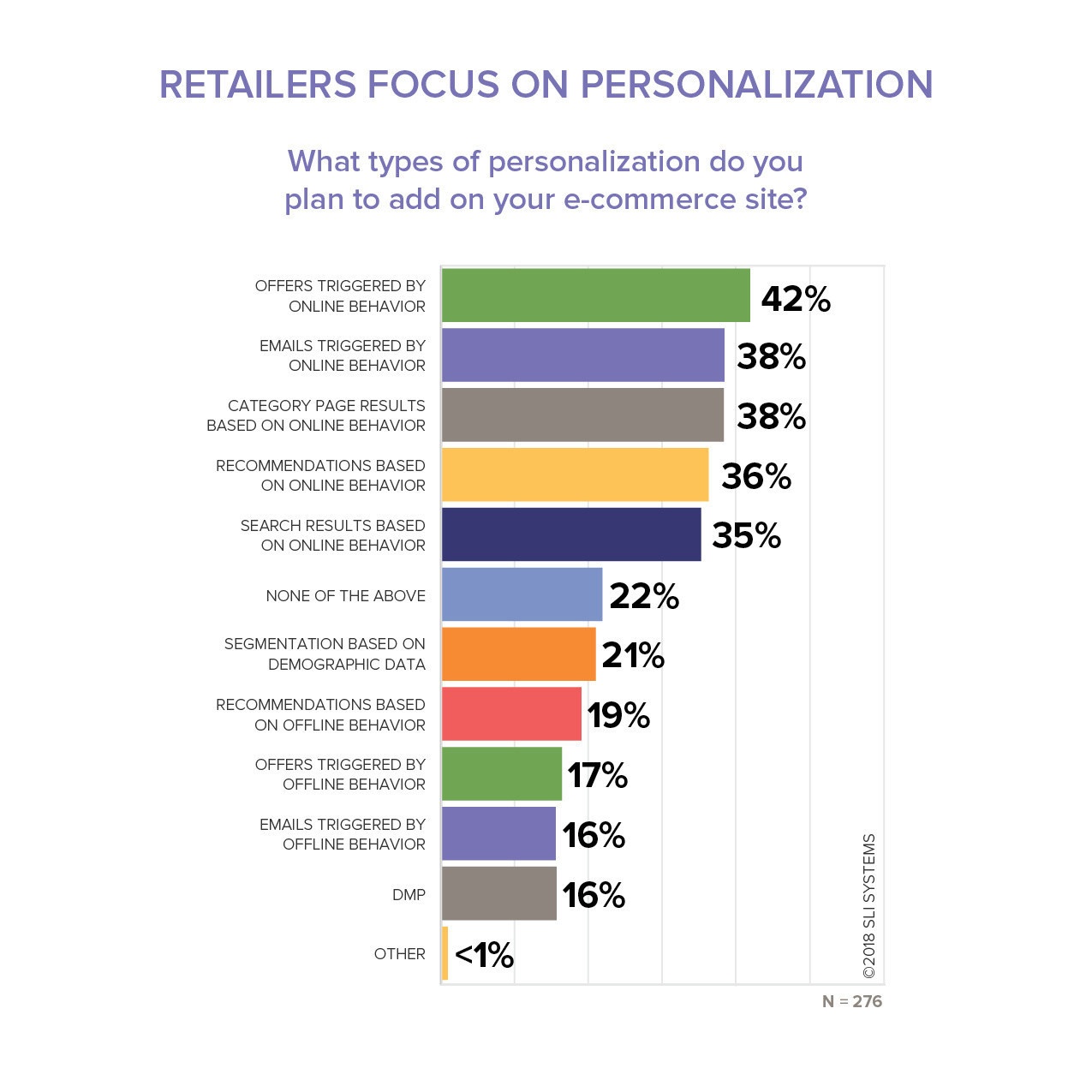
Here’s a glimpse at the most popular types of personalization marketers are already using to personalize the customer journey:
E-commerce Personalization Examples
Let’s take a look now at how e-commerce personalization works in practice for a few different types of sites.
Personalization for Retail
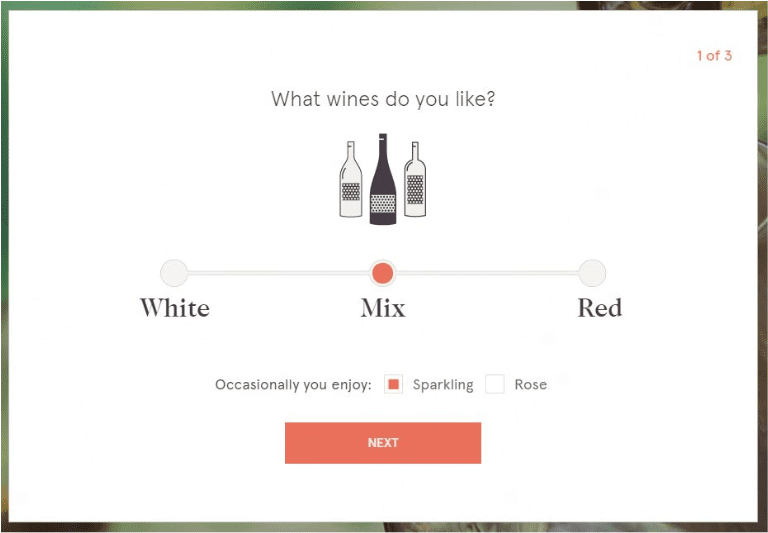
There are endless opportunities for e-commerce personalization in online retail. Even a first-time visitor provides a perfect opportunity to create engagement and start that process of getting to know them better so that in future you can create ever more personalized experiences.
Wine retailer First Leaf pitches itself as ‘the only wine club tailored to you’. With its core values relying on a personalized approach, it was vital that they be able to quickly gather data on potential customers to show just how great their personalized wine service could be. To this end, they targeted first-time visitors with a fun quiz to help quickly narrow down their tastes. This simple, but effective approach provides both the consumer and brand with valuable insights into their relevant tastes.
As a visitor interacts with your site more, personalization can rely on behavioral data, for example, the products they’ve browsed, or items added to cart. A visitor looking at specific types of clothing on a fashion retailer’s website can prompt recommended items in similar ranges – rather than simply suggesting other items that the retailer has selected to promote, Dynamic Promotions allow for customer-specific examples instead – increasing the possibility that the customer will be interested in adding other items to the basket for purchase.
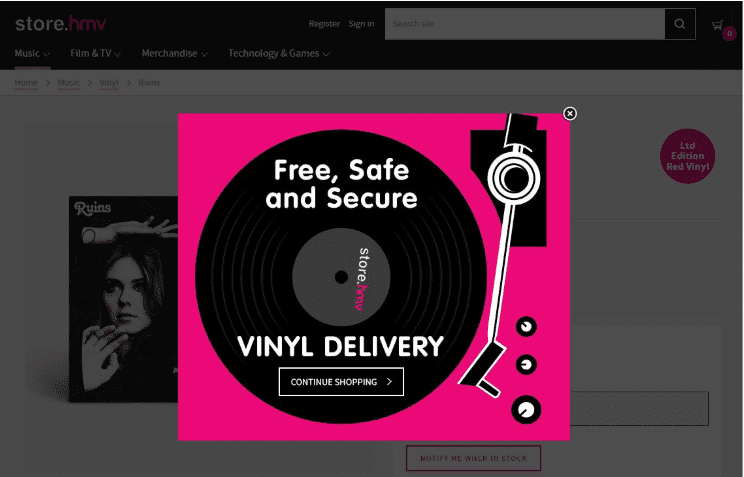
Entertainment retailer HMV wanted to recognise customers showing interest in buying albums on vinyl, but were hesitant to complete the purchase. Those demonstrating intent to leave the site after viewing records were shown a notification that highlighted the safety of HMV’s vinyl delivery. This preempted any concerns about the notoriously fragile medium getting damaged in the post and reassured the visitors that their purchase would arrive safely, and at no extra cost.
Another important type of data for e-commerce personalization is contextual, for example, geo-location data. This type of data can be used in a broader range of situations and can be used to generate relevant messages, even when personal data is missing.
Fashion retailer Burberry was one of the first to pioneer location-based marketing on the offline world way back in 2012 with a billboard that reacted to the weather. Creating this on the online can be even more effective, as it’s a chance to capture those consumers driven to action by the weather at that moment of intent to buy.
Rain? Promote those umbrellas. Sunny? Showcase your best selling sunglasses. Even better – target referral traffic from social or ads focused on the weather, and mirror that message on-site. Just make sure you’re providing value to the consumer, like stationery retailer Scribbler. The brand made sure to give their customers a heads-up when the UK experienced some delivery delays due to the snow.
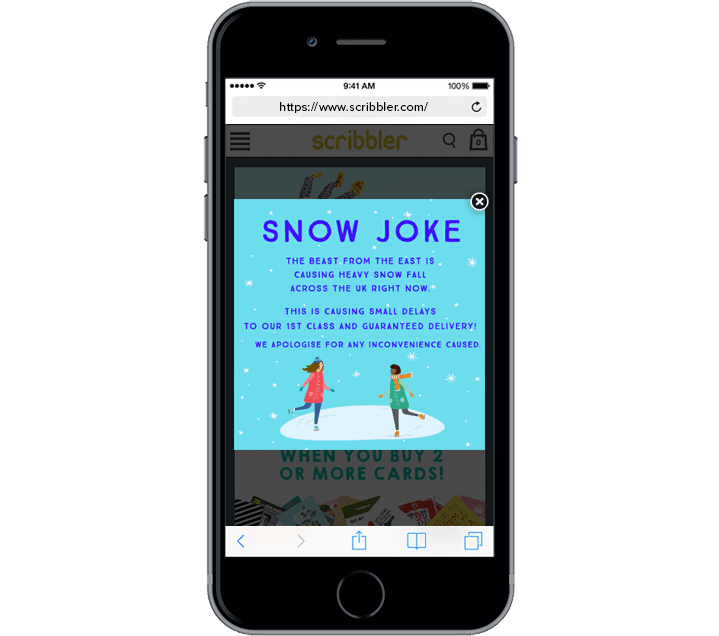
Though personalized approaches offer a quick way to speak to new visitors, it’s important too to consider how they can build loyalty with returning customers. Online supermarket Ocado sends out emails to customers who haven’t shopped with them for a while, enticing them back with a personal offer. The touch of familiarity starts in the email’s subject line, where the customer’s name is included alongside the words ‘we miss you’ – and a limited time only offer is made for a discount off of their next Ocado purchase.
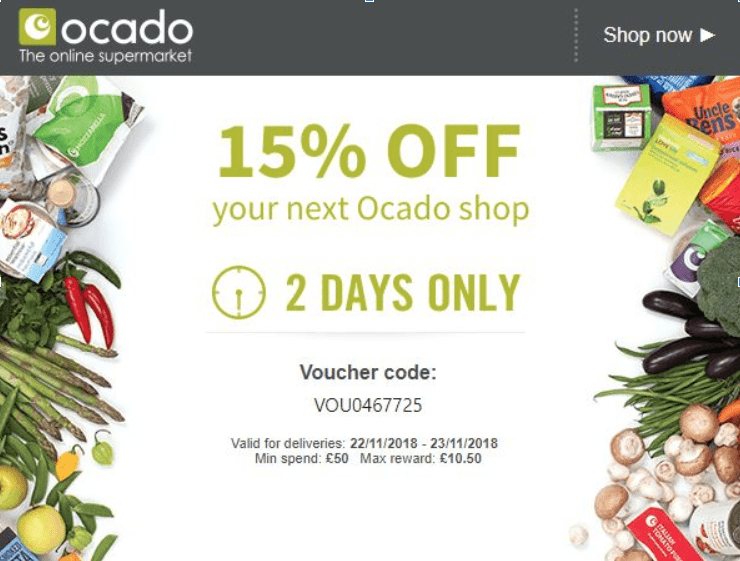
Recognizing a returning customer offers benefits to both parties. Dominos Pizza remembers customers’ previous orders to enable speedy reordering. Many people have their own favourite toppings for pizzas, so the ability to easily click through and order the same items again – be they a simple Margherita or a complicated custom-made selection – presents an opportunity for customers to avoid decision making and commit to purchasing.
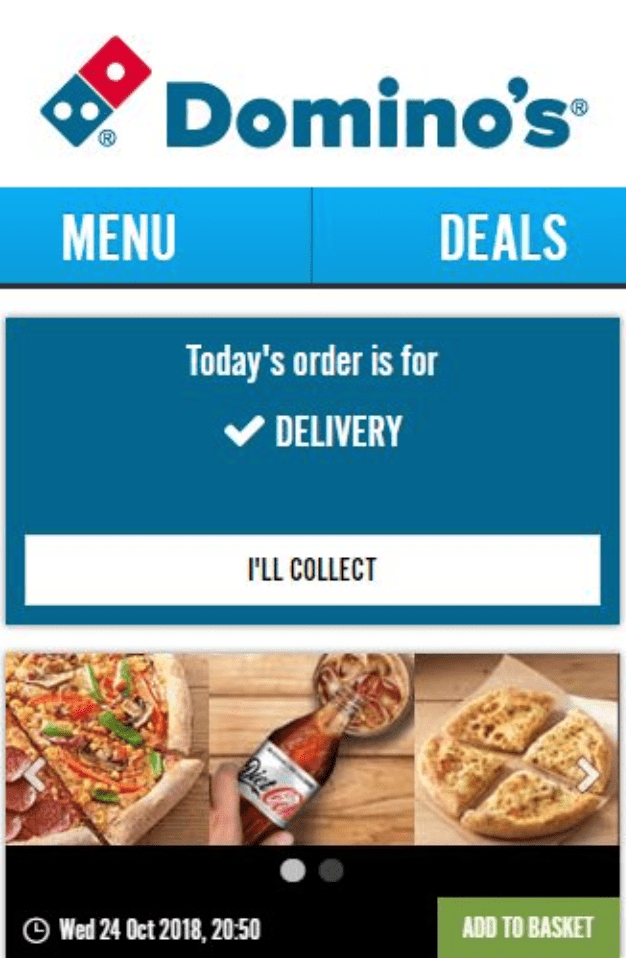
Personalization for Travel
Where once travel agents were the only way to easily access all the information one needed to book a trip, the internet allowed consumers to build their perfect trip from the comfort of their home. The only part of the experience that has been lacking is the sense of curation that agencies offered – something that looks set to return to the industry due to the opportunities personalization affords.Glenn Fogel, the CEO of Booking Holdings says:
“I always give the analogy of that old-time human travel agent, who knew everything about you because they knew the things you’ve done in the past. And they knew your income, they knew what you liked. They know what kind of trip you should have, what kind of restaurants you should go to, what kind of attractions you should go to, what kind of experiences you should have. … That’s what [artificial intelligence] needs to recreate so that when people come to us, we are able to provide them what really is the perfect trip and make their lives easier.”
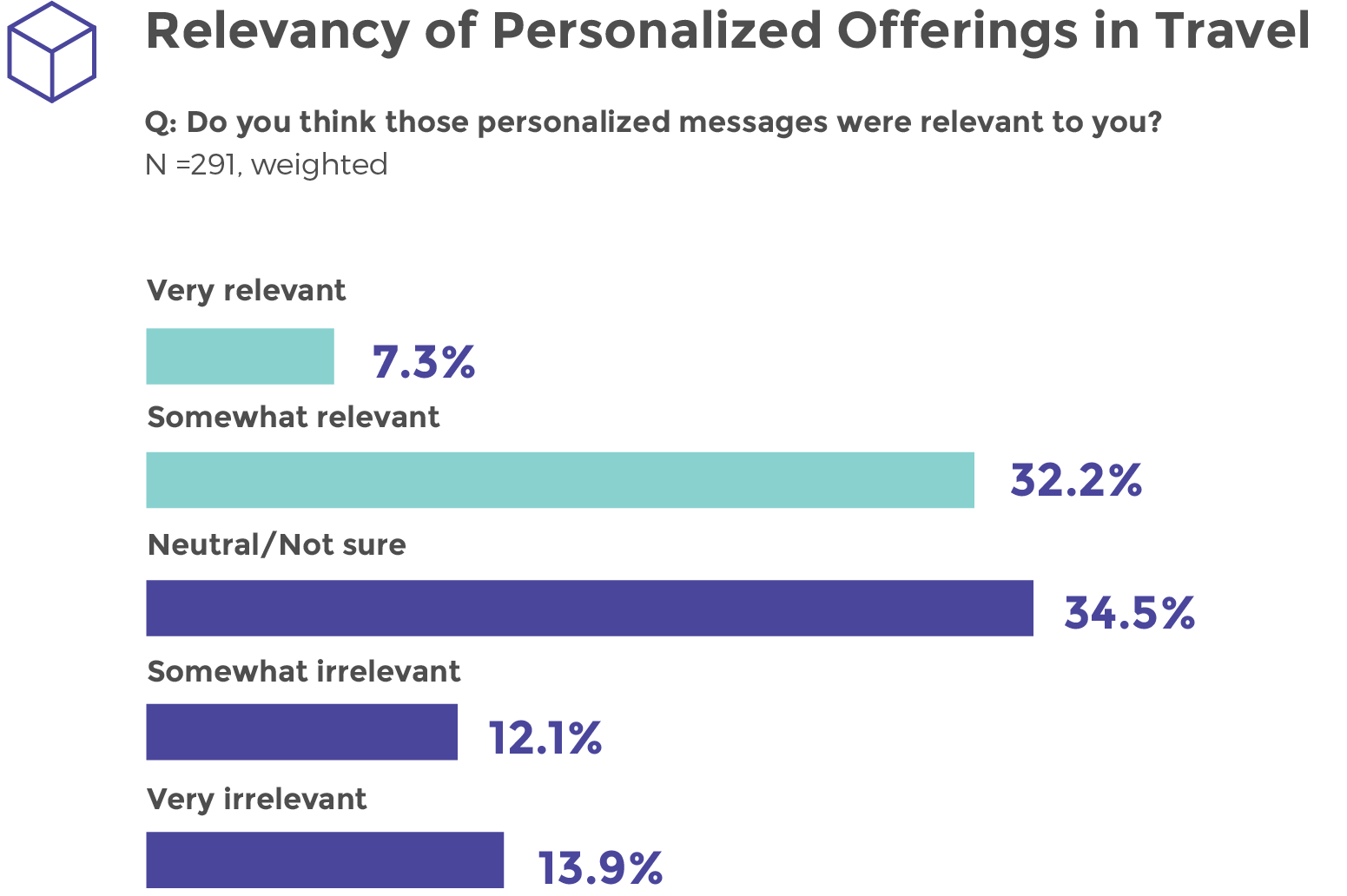
The key, now, is to realise this potential. A recent survey by Skift found that only 40% of consumers who had received personalized messages from online travel companies felt that those messages had been relevant. Travel brands have to do better at getting closer, and one way to do this is by inferring intent based on behaviour. Filip Filipov, vice president of product management at travel price-comparison service Skyscanner talks about the need to utilize ‘contextual clues’ :
“A lot of personalization can be generated based on high-level details like your location or the time of day you’re searching and other contextual clues like your browsing behavior, rather than specifically about ‘I am this person,’”
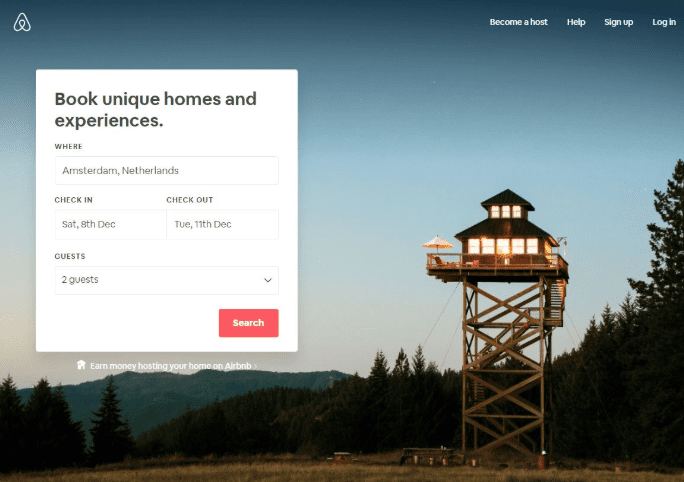
Airbnb has a simple personalized touch on its homepage that makes all the difference – returning visitors see the search already populated with whatever they last searched for. With potential holidaymakers likely already set on at least the basic idea of when and where they would like to travel, it’s a small move that allows for a much smoother customer journey.
This behavior-led personalization can easily be extended as customers return, with the ability to retain information on preferred airlines, frequent destinations and whether or not a customer has shown an active interest in direct flights over cheaper routes involving stopovers. Websites like that of flight and holiday comparison company Kayak take this data and use it to present the options that are likely to be most relevant to each individual user.
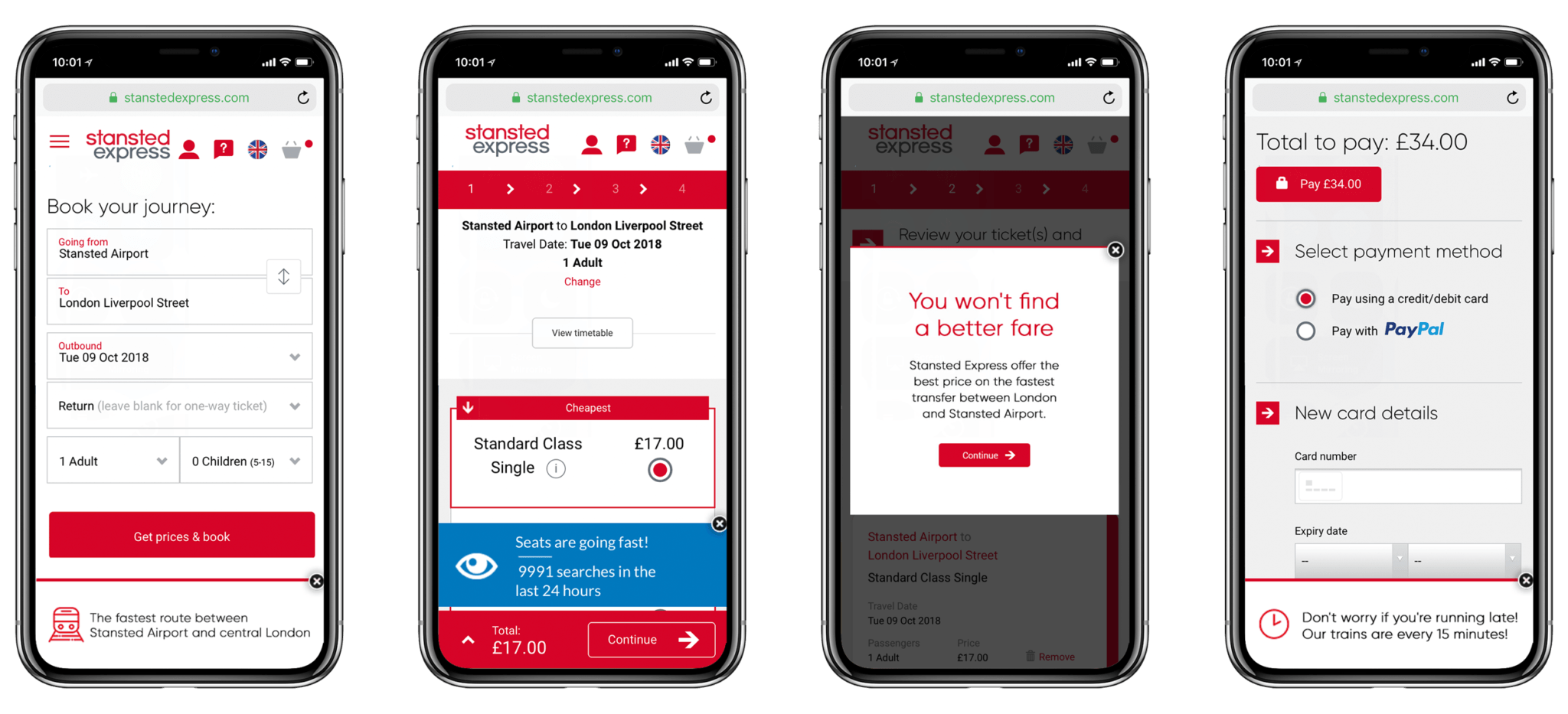
With limited inventory, travel brands are also perfectly placed to use real-time data to create a personalized experience for all visitors. Train operator Stansted Express combined this idea of real-time data, via Dynamic Social Proof, with other messages to create a fully optimized customer journey within the booking funnel.
Personalization for Financial Services
As one of the most privacy-sensitive sectors, personalization has been a huge challenge within the financial services industry – with 94% of banks unable to deliver on ‘personalization promise’. As the industry is disrupted by new entrants such as Monzo though it’s becoming an imperative.
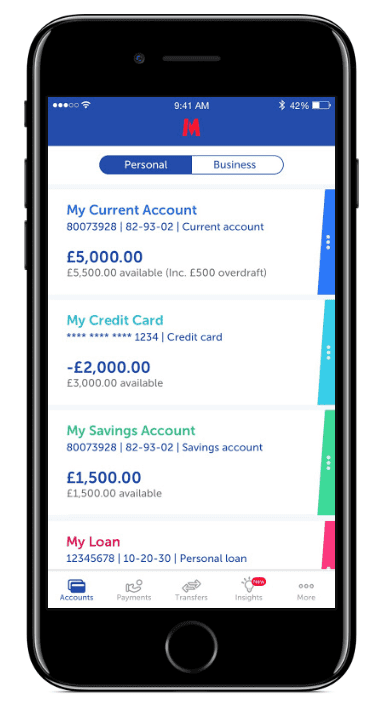
Over the past few years, personal finance apps and bots have surged in popularity, offering customers the ability to track their spending, receive detailed breakdowns of their money habits and get customized budgets. In October of 2018 Metro Bank became the first UK bank to implement AI-powered money management tools in its app. Offering personalized insights, based on data the bank already has access to, customers get tips and recommendations on managing their money, a clear value adds and better customer experience than a PDF statement download.
But what about personalizing the journey for visitors who are not yet customers? There are plenty of opportunities to introduce personalization when it comes to product discovery, especially during the research phase. For those browsing mortgages, for example, showing relevant marketing through modal notifications can direct visitors towards products that could be right for them.
And once a visitor has started completing an application or quote process, there’s plenty to test and learn from when it comes to personalization.
Argos Pet Insurance was looking to learn how personalization at the start of the quote funnel would impact conversions later on, and also test how value propositions would move the visitor through the funnel. Through testing, Yieldify and Argos identified that each step of the quote funnel required a different action to improve engagement and encouragement to the next step. The learnings gathered could then be utilised across the rest of the RSA group to help drive more personalised experiences and reduce funnel abandonment.
Conclusion
With the race on to master e-commerce personalization hopefully, this guide has provided some food for thought. As we’ve seen, the most effective approaches are those that aren’t perceived as invasive or ‘creepy’ – campaigns that instead work with the customer’s behaviour, contextual and real-time data to provide relevant messaging that improves the customer journey.
Consider the ways that personalization can make your customers’ online experiences easier – whether that is directing them to the products they’ve previously been looking for, or using the data your website has collected to offer them new and appropriate ideas that anticipate their needs and, ultimately, benefit everyone involved. And if you’re in need of further inspiration, why not book a consultation below! We’d be happy to share our insights into creating personalized customer journeys.